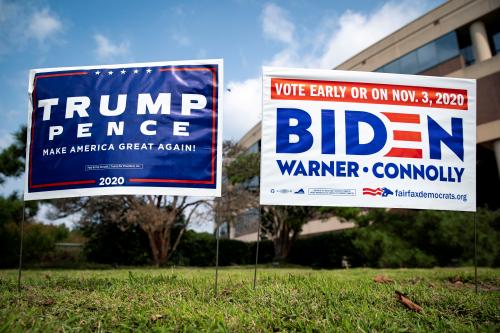If you want more content like this, subscribe to our newsletter.
This week in Class Notes:
-
- The median worker would be $40,000 a year better off if income inequality had not risen.
- Public higher education spending improves students’ educational attainment and reduces student debt.
- High school students in Texas, Louisiana, and Mississippi performed better in school after affirmative action was reinstated—regardless of race.
- This week’s top chart shows that non-college grads are now less likely to marry than college grads.
- The economy is demanding new skills from workers, but the education system isn’t supplying them; Bruno V. Manno suggests overhauling K-12 in this week’s choice opinion.
- Check out our new piece showing why Salt Lake City scores so well in terms of intergenerational mobility (spoiler: this is to do with marriage, too).
- Finally, enroll in our free email course that starts this Sunday focused on the obstacles facing the middle class, and policies to address them.
What has income equality cost the non-rich?
Since World War II, economic growth has pushed incomes up for everyone. But income growth has been concentrated among the top income-earners; the pie is getting bigger, but so is the rich’s share of the pie. A new RAND report investigates the implications of unequal income growth, and what earnings would look like today if income growth from 1975 to 2018 remained as equitable as it was after the World Wars. If the fruits of economic growth had been shared equally across income groups, those below the 90th percentile of income earners would have earned $47 trillion more since 1975. For today’s median full-time, prime-aged worker, that translates to an additional $42,000 per year.
Public higher education spending’s impact on students
Federal and state governments are fixing to make quick budget cuts as the pandemic response continues to drain resources, and higher education funding is at risk. Against this backdrop, Chakrabarti et al. measure how public higher education spending effects students. According to the authors’ analysis, state appropriation increases reduce four-year students’ debt and shortens their graduation time. For two-year students, increased public funding resulted in more educational attainment and more student debt (consistent with their increased attainment), but lower odds of defaulting. When public spending rises, students are also more likely to go on to own homes and cars, and less likely to have bad debt.
How does affirmative action impact high schoolers’ behavior?
Do affirmative action policies impact students’ academic performance before they apply to college? Yes: and racial gaps shrink too, according to Akhtari et al. In 2003, the Supreme Court effectively reversed a lower court decision that prevented Texas, Louisiana, and Mississippi from using race in admissions to public universities. The authors take advantage of the legal shift to gauge students’ response to race-conscious admissions; when affirmative action was reinstated in the three states, students increased their pre-college human capital investment—SAT scores, grades, and attendance. The authors estimate that affirmative action shrunk the racial gap across a range of measures—in grades by 18%, in applications to selective schools by 13%, in attendance by 8%, and in SAT math scores by 5%. While the bulk of progress is among Black or Hispanic students with the most to gain from affirmative action policies, white students’ SAT scores also slightly increased.
Top chart: College no longer associated with lower marriage rates
This week’s top chart from the Institute for Family Studies shows trends in marriage rates by education from 1970 to 2018—specifically, the proportion of adults between 25 and 50 who have never married. Before the early 2000s, college graduates were less likely to marry than non-college graduates; but since then the trend has reversed.

Choice opinion: Modernizing education
“Today, America is encountering challenges and opportunities not at all dissimilar to those it encountered roughly a century ago. Today, as in the early 20th century, there is growing demand for a new sort of worker, one who possesses new and different skills from those that were most essential just a generation ago. Today, as then, rapid social, economic, and technological changes are transforming the way personal and professional relationships are made and maintained. And today, as before, savvy educators and activists are learning to adapt school structures and curricula to better prepare their students to work and live in modern society,” writes Bruno V. Manno for National Affairs.
Self-promotion: Intergenerational mobility, place, and marriage
The American Dream is sputtering in some cities, but alive and well in others, especially Salt Lake City. Because of its impressive intergenerational mobility rate, many are curious: what’s the Salt Lake secret? In our latest piece, Sarah Nzau and Richard Reeves explore the factors that affect differential rates of intergenerational mobility across cities and what less-mobile cities should consider. Using Opportunity Insights data, we figure that income sharing in Salt Lake—mostly through marriage—and perhaps household stability, are primarily driving the city’s impressive rates of upward mobility.
Enroll in our new email course
Starting on Sunday, we are offering a free email course based on A New Contract with the Middle Class that breaks down key issues facing the middle class and how to solve them. Our course was developed using data and real stories from Americans around the country to answer some tough questions: Are middle class Americans thriving or struggling? What are their primary challenges, and how can we solve them? Sign up here.








Commentary
Class Notes: Affirmative action and student achievement, unequal income growth, and more
Wednesday, October 7, 2020